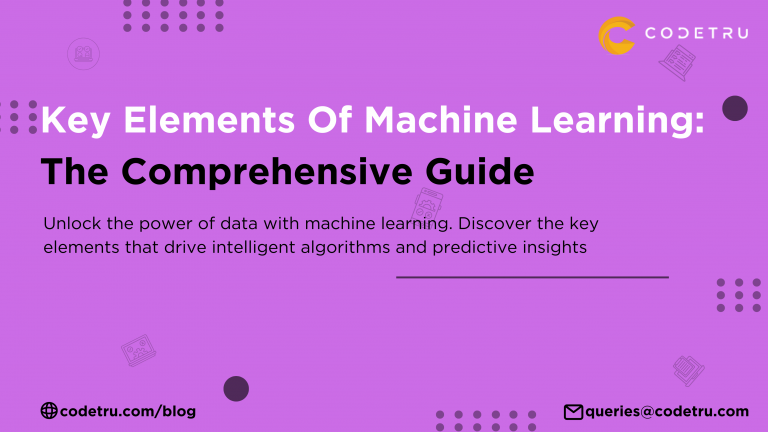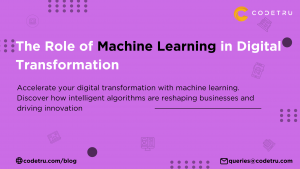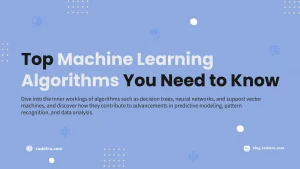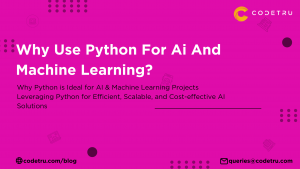Machine learning gives computers the power to automatically learn and improve from experiences. Machine learning elevates computers’ ability in that, it helps it discover how they can perform tasks, even when they are not explicitly programmed for them. Machine learning focuses on the development of computer programs that can access data and use it to learn for themselves so that they carry out certain tasks.
Based on the contextual data provided the machine makes predictions by identifying patterns. All these happen by the learning picked by the machine due to data observation or instructions given to it. Learning may not be needed if the algorithm of our system is self-sufficient to inform the machine of the action mode with the necessary steps for simple tasks. For advanced tasks, users find it difficult to manually create the needed algorithms.
Primarily, the computers are programmed to learn automatically and adjust actions.
However, in real life, it has been found that training the machine to develop its own algorithm, rather than having human programmers is more effective. For instance, when we use classic algorithms of machine learning, we consider the text as a sequence of keywords whereas, in ML, an approach based on semantic analysis mimics the human ability to comprehend the text.
Machine learning provides various routes to teach computers to perform tasks even where an unsatisfactory or incomplete algorithm is concerned. In cases where several potential answers are possible, one o+f the approaches tells the system some of the correct answers, used as training data for the computer to improve the future algorithm it uses.
History of Machine Learning
Arthur Samuel an American IBMer coined ’Machine Learning’ in 1959 was a pioneer in the field of computer gaming and artificial intelligence. Interest in pattern recognition has been growing since the 1970s. However, in 1981, a report on teaching strategies to neural network learns to recognize 26 letters, 10 digits, and 4 special symbols from a computer terminal was a seminal moment in the development of ML.
Key Elements of Machine Learning
There are millions of new machine learning algorithms developed each year. Every machine learning algorithm has three components:
Representation: How to represent knowledge. This includes presenting decision trees, sets of rules and instances, graphical models, and neural networks just to name some of the types..
Evaluation: The way to evaluate the Hypotheses. This involves prediction and recall, squared error, likelihood and posterior probability, cost, and margin, just to name a few.
Optimization: The way the hypothesis is generated, is known as the search process. For example, combinatorial optimization, convex optimization, constrained optimization.
All MLs is a framework that helps understand all other algorithms using combinations of these above three components.
Types of Machine Learning
There are four types of machine learning:
Supervised Learning: Supervised learning is Training data that includes desired outputs. In this approach, the machine learns by example under human supervision.
Unsupervised learning: Unsupervised learning happens when training data does not include the desired outputs. In Unsupervised learning, algorithms are tasked with identifying patterns in data, trying to spot similarities and variances, and categorize them into segments. An example is clustering. Its quality of learning is not guaranteed.
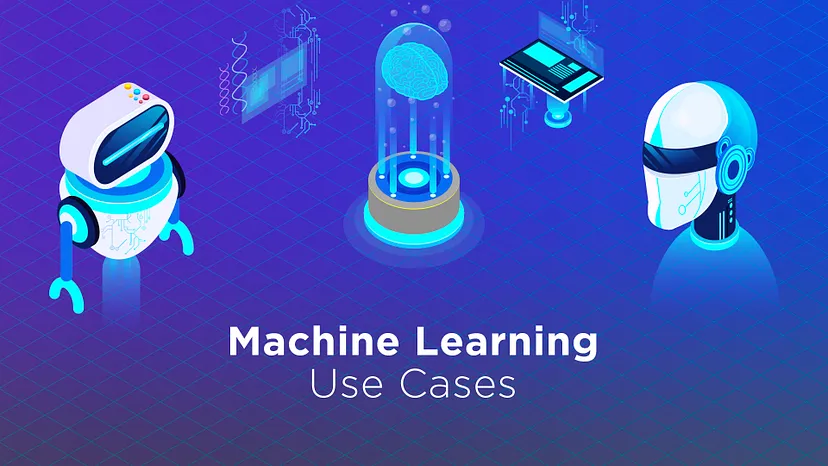
Semi-supervised learning: This approach combines supervised and unsupervised learning. The technique uses a small set of labeled data and a large set of unlabelled data to train systems. The labeled data partially trains and then the partially trained model labels the unlabelled data, in a process called pseudo-labeling. Finally, the model is trained on the resulting mix of the labeled and pseudo-labeled data.
Reinforcement learning: Rewards from a sequence of actions. In this process, the computer learns to think about how a complete novice, eventually, by assessing the user experience design of buttons and press the ones needed. It learns and as a result, their performance will get better and better.
Supervised Learning: Supervised learning is both mature & much easier than unsupervised. It is led by a machine- learning model training basically composed of mathematical function with self modification ability. With every fresh data it is sure to make accurate predictions.
Thanks to Geoffrey Hinton, his invention in 1986, lead to and thus is called the father of deep learning. Frankly, this basic process of spotting and hypothesizing patterns and applying the patterns runs much of the world.
What is Deep Learning?
Simply put, Machine learning on steroids is Deep learning. Its techniques enhance a machines’ ability to identify and amplify even the smallest patterns. As this has many, many layers of simple computational nodes working together to process and regress data to deliver a final result in the form of the prediction. This technique is called a deep neural network.
There are two types of machine learning software on the market.
Open source and proprietary software. Popular free and open source include Caffe, CNTK, deeplearning4j, deepseed, ELKI, infer.net, Keras, mahout, mallet, ML.net, mlpack, MXnet, Neural lab, Octave to name a few.
Amongst the more established proprietary ones are Amazon machine learning, Angoss knowledge studio, Azure machine learning, IBM data science experience, Google prediction API, IBM knowledge modeler, KXEN modeler, LION server, Mathematics, Matlab, Microsoft Azure, Neural designer, Neural solutions, Oracle data mining, SAS enterprise miner, SequenceL and STATISTICA data miner
Limitations of Machine Learning
Machine learning algorithms are also limited by a few factors including Bias which the system can pick up during unsupervised learning and then go undetected. The model assessments are also subjective to the individual’s interpretation of the outcome, this can also occur due to the data splitting methods where some of the data is used to predict the rest. And ethics, the eventual result as shown to the users and as used is all dependent on what is shown and how it is presented to the users. People do tend to bring in personal experience and biases into decision making which eventually do seep into the system.
FAQs on Key Elements of Machine Learning
1. What are the key components of machine learning algorithms?
Machine learning algorithms consist of three key components: representation (like decision trees and neural networks), evaluation (methods like prediction and recall), and optimization (processes such as convex optimization).
2. What are the types of machine learning?
There are four main types of machine learning: supervised learning (with labeled data), unsupervised learning (finding patterns in unlabeled data), semi-supervised learning (using a mix of labeled and unlabeled data), and reinforcement learning (learning from feedback or rewards).
3. How does supervised learning differ from unsupervised learning?
Supervised learning involves training with labeled data to predict outcomes, while unsupervised learning identifies patterns and structures in data without predefined labels.
4. What is deep learning and how does it relate to machine learning?
Deep learning is an advanced subset of machine learning that uses deep neural networks with multiple layers to process and learn complex patterns from data, enabling more accurate predictions and insights.
5. What are the limitations of machine learning algorithms?
Limitations include potential biases in data, subjective model evaluations, and ethical considerations in decision-making processes influenced by human biases.

